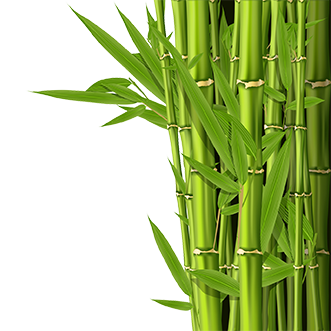Silicon, a cornerstone of our body
Silicon is one of the components of connective tissue (bone, cartilage, tendon, muscle, vascular tissue), tissue which makes up almost 40% of the body. It is also present in many organs such as the liver, kidneys, lungs, heart… as well as in the skin, hair and nails.
There it acts as a sort of "great architect". It enables the building of "bridges" or links between the known fibrous molecules - elastin, collagen and keratin - and other less well known molecules called proteoglycans, the structural supports for all tissue in the body. It therefore assures molecular stability and harmony, guarantees the proper functioning of an organ and participates in the elasticity of the skin, blood vessels and tendons, and in the strength of bone and cartilage1-2.
Silicon also helps regulate the distribution and fixation of magnesium and calcium, by improving their synergy, for example in bone calcification.
1.Nielsen et al. Update on the possible nutritionnal importance of silicon.Int. J Endocrinol.2013 ; 2013 :316783.
2.Rodella et al. A review of the efffects of dietary silicon intake on bone homeostasis and regeneration. J Nutr Health Aging 2014 Nov ; 18(9) :820-6.
Some vocabulary
Mineral silicon, silicic and orthosilicic acid: how are they different?
Mineral silicon is composed of 1 silicon atom and 2 oxygen SiO2 atoms. Insoluble in water, it cannot be assimilated by the body.
Silicic acid is the plant origin molecular form: the mineral silica is converted by certain plants into plant silica, or silicic or orthosilicic acid. It is in this water soluble form that the silicon element is best absorbed in the intestines, transported by the blood, excreted in urine.
My shopping basket • tray meals rich in silicon
 Orthosilicic acid is the raw material used for building the stems, leaves and roots of all plants. Vegetables, cereals, pulses, fruit and dried fruit, and oil seeds all provide a dietary intake of silicon. Some plants are naturally rich in silicon: horsetail, nettle, bamboo...
Orthosilicic acid is the raw material used for building the stems, leaves and roots of all plants. Vegetables, cereals, pulses, fruit and dried fruit, and oil seeds all provide a dietary intake of silicon. Some plants are naturally rich in silicon: horsetail, nettle, bamboo...
Partially soluble, silicon (which is a combination of oxygen and aluminium, forming the main part of sedimentary rock) is found in seepage water giving rise to "silicon-rich" water (check the label to find out its silicon content).
When it comes to drinks, beer (to be drunk in moderation of course), coffee and tea all contain silicon.
A few examples
|
Silicon content |
| 100 g wholegrain cereal |
10,7 mg |
| 200 g white bread |
3,38 mg |
| " " wholegrain bread |
4,50 mg |
| 200 g brown rice |
4,14 mg |
| 2oo g new potatoes |
0,58 mg |
| 200 g carrots |
4,58 mg |
| 250 g peas |
6,10 mg |
| 250 g bananas |
13,6 mg |
| 100 g grapes |
8,25 mg |
| ½ L of mineral water |
3,44 - 7,23 mg |
| ½ L of beer |
8 mg* |
| Source : Diatary silicon intake and absorption. Jugdaohsingh et al. Am J Clin Nut. 2002. |
| * Harry Robberecht et al.International Journal of Food Properties .Volume 11, 2008 - Issue 3. Silicon in Foods : Content and Bioavailability. |
The level declines with age
The young adult body in good health contains between 6 and 8 grammes of silicon, double that of iron!
Unfortunately our silicon reserves become depleted over the years, notably due to its low presence in the modern diet (refined cereals, rapid plant cultivation with forced "inputs" and others, preventing the optimum fixation of silicon in the soil…) but also because its assimilation and dietary uptake declines with age (less than 20 mg/day versus 20 - 50 normally.
(Jurkic et al. Biologicla and therapeutic effects of arthosilicic acid and some ortho-silicic acid releasing compounds. New perspectives for therapy.Nut. Metab 2013 ; 10 :2).
Who, when, why ?
 • Seniors are certainly a priority: involved in general mineral metabolism and the building of support fibres (collagen…), silicon is important, alongside other nutritional factors such as zinc, copper and manganese, for joint comfort and the calcification of bone tissue. For blood vessel walls, rich in collagen and elastin, it provides suppleness.
• Seniors are certainly a priority: involved in general mineral metabolism and the building of support fibres (collagen…), silicon is important, alongside other nutritional factors such as zinc, copper and manganese, for joint comfort and the calcification of bone tissue. For blood vessel walls, rich in collagen and elastin, it provides suppleness.
 • Menopausal women: silicon interacts with oestrogen levels for bone density (results of a study on 3200 women aged between 50 and 62) *.
• Menopausal women: silicon interacts with oestrogen levels for bone density (results of a study on 3200 women aged between 50 and 62) *.
*Macdonald et al. Dietary silicon interacts with oestrogen to influence bone health : evidence from the Aberdeen Prospective Osteoporosis Screenning Study. Bone 2012, 50(3) ;681-687.
 • For all those who want to preserve a "beautiful skin": from the age of 40, we start noticing a loss of elasticity and slackening of the skin that leads to wrinkles. For, as we have seen, our silicon reserves are depleted with age.
• For all those who want to preserve a "beautiful skin": from the age of 40, we start noticing a loss of elasticity and slackening of the skin that leads to wrinkles. For, as we have seen, our silicon reserves are depleted with age.
*Jurkic et al. Biologicla and therapeutic effects of arthosilicic acid and some ortho-silicic acid releasing compounds. New perspectives for therapy.Nut. Metab 2013 ; 10 :2.
 • Athletes: they make high demands on joints, tendons… which therefore have need to "regenerate".
• Athletes: they make high demands on joints, tendons… which therefore have need to "regenerate".
 • For hair loss, fine or fragile hair, brittle nails: these are made up of keratin which contains a lot of silicon.
• For hair loss, fine or fragile hair, brittle nails: these are made up of keratin which contains a lot of silicon.
*Jurkic et al. Biologicla and therapeutic effects of arthosilicic acid and some ortho-silicic acid releasing compounds. New perspectives for therapy.Nut. Metab 2013 ; 10 :2

 Orthosilicic acid is the raw material used for building the stems, leaves and roots of all plants. Vegetables, cereals, pulses, fruit and dried fruit, and oil seeds all provide a dietary intake of silicon. Some plants are naturally rich in silicon: horsetail, nettle, bamboo...
Orthosilicic acid is the raw material used for building the stems, leaves and roots of all plants. Vegetables, cereals, pulses, fruit and dried fruit, and oil seeds all provide a dietary intake of silicon. Some plants are naturally rich in silicon: horsetail, nettle, bamboo... • Seniors are certainly a priority: involved in general mineral metabolism and the building of support fibres (collagen…), silicon is important, alongside other nutritional factors such as zinc, copper and manganese, for joint comfort and the calcification of bone tissue. For blood vessel walls, rich in collagen and elastin, it provides suppleness.
• Seniors are certainly a priority: involved in general mineral metabolism and the building of support fibres (collagen…), silicon is important, alongside other nutritional factors such as zinc, copper and manganese, for joint comfort and the calcification of bone tissue. For blood vessel walls, rich in collagen and elastin, it provides suppleness. • Menopausal women: silicon interacts with oestrogen levels for bone density (results of a study on 3200 women aged between 50 and 62) *.
• Menopausal women: silicon interacts with oestrogen levels for bone density (results of a study on 3200 women aged between 50 and 62) *. • For all those who want to preserve a "beautiful skin": from the age of 40, we start noticing a loss of elasticity and slackening of the skin that leads to wrinkles. For, as we have seen, our silicon reserves are depleted with age.
• For all those who want to preserve a "beautiful skin": from the age of 40, we start noticing a loss of elasticity and slackening of the skin that leads to wrinkles. For, as we have seen, our silicon reserves are depleted with age. • Athletes: they make high demands on joints, tendons… which therefore have need to "regenerate".
• Athletes: they make high demands on joints, tendons… which therefore have need to "regenerate". • For hair loss, fine or fragile hair, brittle nails: these are made up of keratin which contains a lot of silicon.
• For hair loss, fine or fragile hair, brittle nails: these are made up of keratin which contains a lot of silicon.